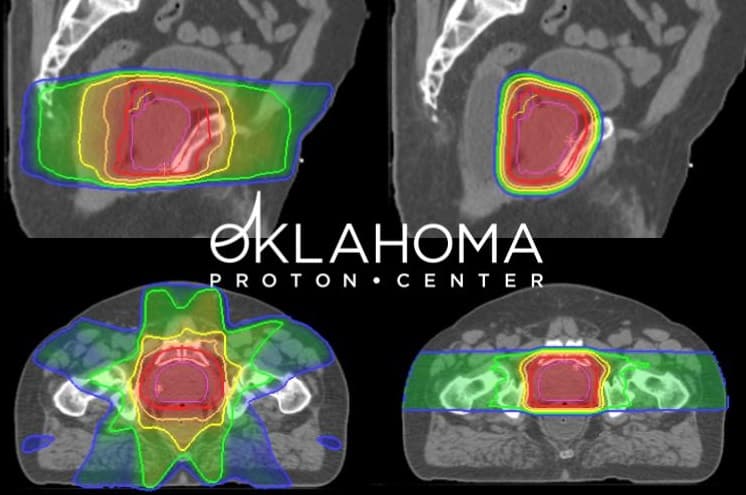
TOTAL DOSE: A SIMPLE EXAMPLE SHOWING JUST HOW MUCH LESS WE TREAT WITH PROTON THERAPY.
One of the more commonly treated cancers with Proton Therapy is prostate cancer. It’s use for prostate cancer has been a controversial topic for decades as people argue costs vs. benefits. In general, I think this is because men with prostate cancer do well << this is great. But I think we must continue to strive for better treatments with less short and long-term side effects. So today we will look at just how much dose gets delivered to a patient with IMRT at the world’s fanciest treatment center (your pick) and compare that to a simple Proton Therapy plan – fixed beam, uniform scanning.
So today, this comparison looks at total absorbed dose and a theoretical Mr. IMRT and a Mr. Proton, a patient with prostate cancer where the cancer was caught pretty early and just located in the prostate.
In simple terms, everyone knows that high energy radiation is not good for healthy, normal, unaffected tissues. Limiting radiation exposure is always a goal that all medical specialties strive for and a goal that government regulatory agencies require. There really is no debate.
Mr. Proton gets a full course of Proton Therapy for his prostate cancer. His treatment is now complete – 44 days worth.
Mr. IMRT now starts his IMRT photon treatment for his prostate cancer.
On what day does Mr. IMRT’s normal, un-involved tissue get the same total radiation dose as Mr. Proton?
About day 32. That’s right, after about 32 days the dose to normal tissue is the same as the dose delivered in 44 days of proton therapy.
So with IMRT your normal tissues get about 2 and 1/2 weeks of treatment that they would not get if you were treated with Proton Therapy.
Or stated another way mr. Proton could be treated for about 55-60 days before the normal un-involved tissues in the pelvis would receive the same total dose as a single 44 day course of imrt.
Conclusion
This is just the math. The math isn’t hard and it isn’t exact. It will vary from case to case based on exact patient anatomy and measurements but we typically see a 30%-40% reduction in the dose to the normal tissues with Proton Therapy planning compared to IMRT.
Now, I do want to be up front and say that the high dose regions of the plans are similar. For some, patients the very highest dose regions are slightly better or slightly worse for this comparison between IMRT and Proton Therapy and some side effects are much more related to the high dose regions, but the mid and low dose (low dose ONLY in the realm of radiation therapy – super high in the context of every other medical field) regions aren’t comparable and dose to normal tissues in the pelvis are very different and less is always the goal.
3.25.19 – amended based on additional cases and more behind the scenes math work.
Dr. Mark Storey MD
Medical Director, Oklahoma Proton Center
